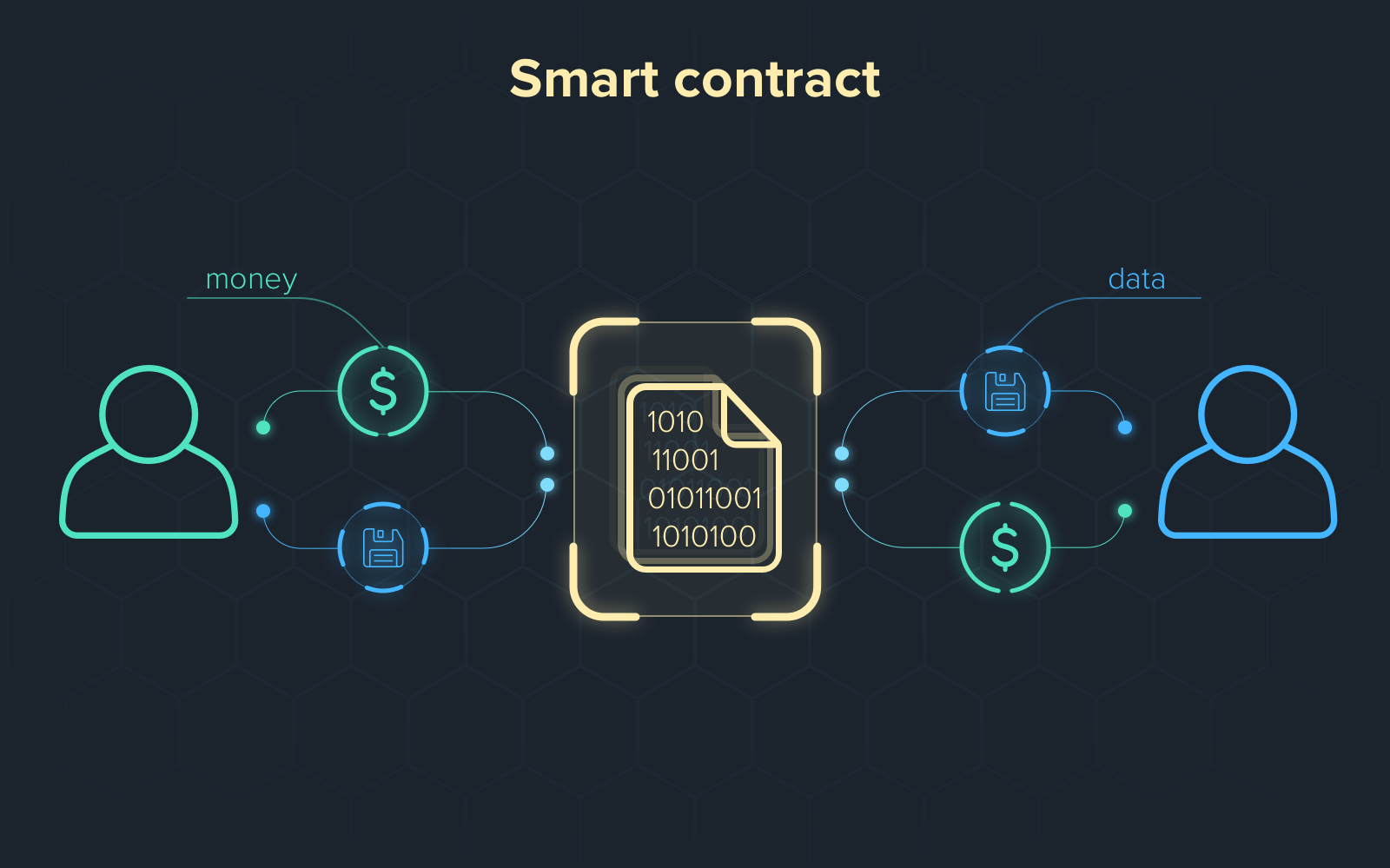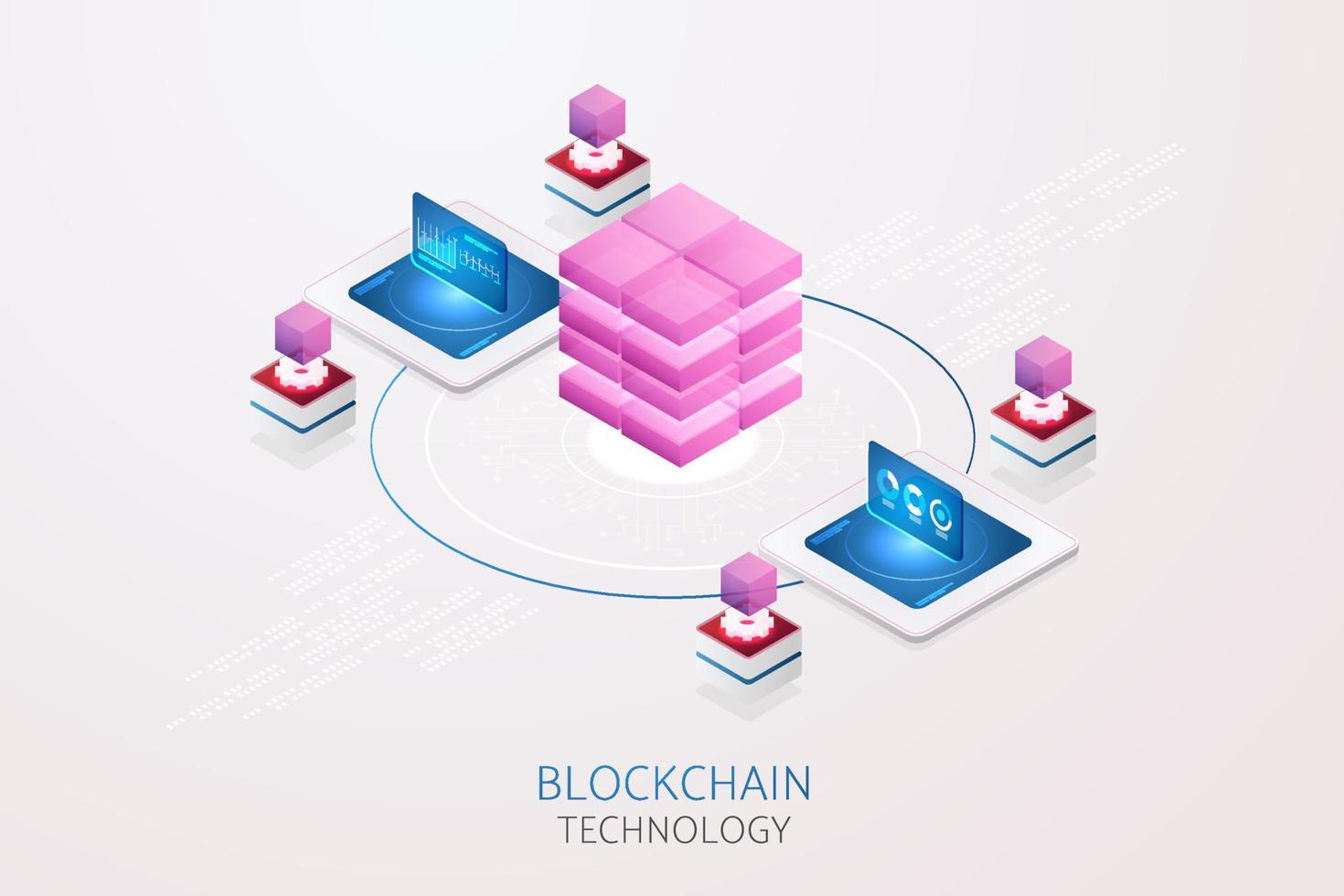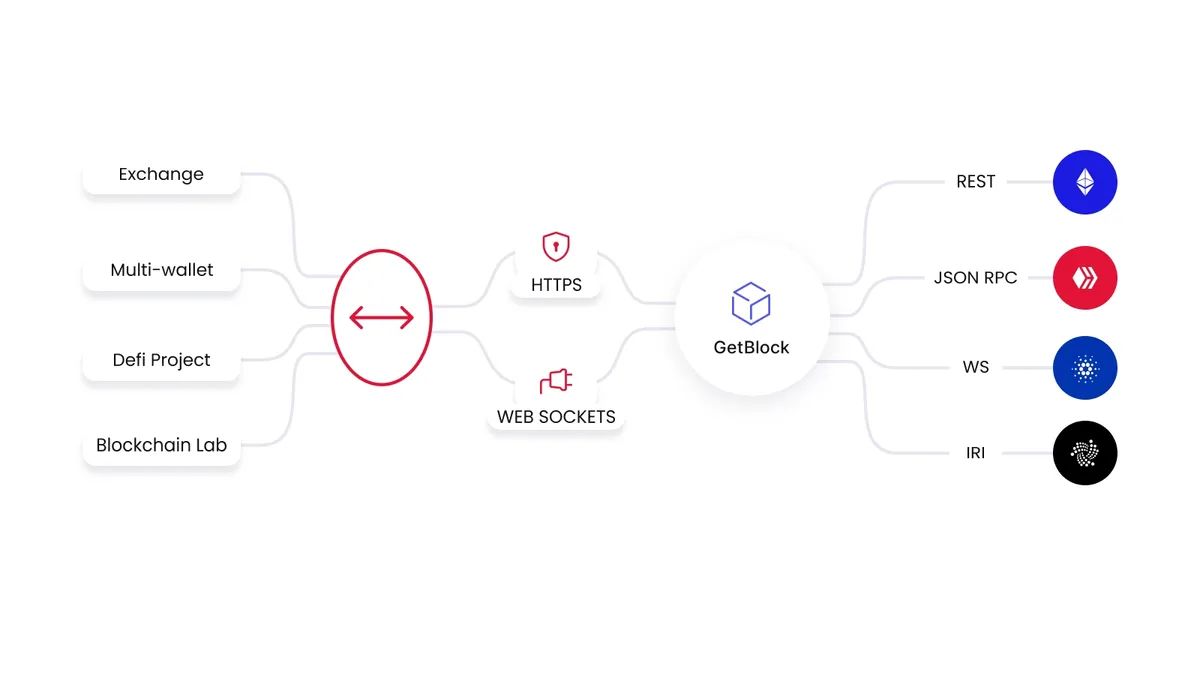Introduction
Welcome to the world of blockchain technology, where transactions are securely recorded on a decentralized digital ledger. Blockchain has gained significant attention in recent years, revolutionizing various industries such as finance, supply chain management, and even art. However, not all types of transactions can be stored directly in blocks on a blockchain.
A blockchain primarily stores transactions in a standardized format, usually in the form of cryptocurrency transfers. These transactions are often referred to as fungible, meaning that each unit is interchangeable with another. However, there are several types of transactions that do not fit into this fungible mold and cannot be stored directly in blocks on a blockchain.
In this article, we will explore these different types of transactions that fall outside the scope of traditional blockchain storage. Understanding these limitations will provide valuable insights into the possibilities and potential challenges of blockchain technology.
So, let’s dive into the world of non-fungible tokens (NFTs), off-chain transactions, privacy transactions, data transactions, and the execution log of smart contracts. By examining these categories, we can gain a deeper understanding of what type of transaction cannot be stored in blocks on a blockchain.
Non-Fungible Tokens (NFTs)
In recent years, the rise of non-fungible tokens (NFTs) has captured the attention of artists, creators, and collectors worldwide. Unlike traditional cryptocurrencies that are fungible and interchangeable, NFTs represent unique assets that cannot be replicated or directly exchanged for one another.
While blockchain technology provides a secure and transparent platform for recording transactions, storing NFTs directly in blocks poses challenges. NFTs typically consist of multimedia content such as artwork, videos, or music. Due to their larger file sizes, it would be impractical to store these assets within the limited space of blockchain blocks.
Instead, NFTs utilize blockchain technology as a means of proving ownership and maintaining a record of transactions. The actual multimedia content is often stored off-chain, either on centralized servers or through decentralized storage systems. When an NFT is transferred, the blockchain records the ownership change while the content remains securely stored outside the blockchain.
This separation between the NFT metadata on the blockchain and the asset itself enables greater flexibility in terms of the types of content that can be tokenized. It also allows for more efficient use of blockchain space, as only the essential ownership information needs to be stored within the blocks.
Furthermore, the off-chain storage of NFTs opens up possibilities for additional features and functionalities. Creators can easily update or modify the content associated with an NFT without tampering with the underlying blockchain. This flexibility allows for dynamic and interactive digital experiences that enhance the value and utility of NFTs.
Overall, while NFTs cannot be directly stored in blocks on a blockchain, the use of off-chain storage for the actual assets provides a practical and scalable solution. This enables the tokenization of a wide range of unique assets, revolutionizing the way we perceive ownership and value in the digital realm.
Off-Chain Transactions
While blockchain technology provides a secure and transparent framework for recording transactions, not all transactions need to be stored directly in blocks on the blockchain. Some transactions, known as off-chain transactions, occur outside the blockchain network and are only settled on the blockchain at a later point.
Off-chain transactions are often utilized to address scalability and speed issues that can arise with on-chain transactions. In scenarios where a high volume of transactions occurs, storing each transaction directly in blocks can lead to congestion and slower processing times. To overcome this challenge, off-chain transactions offer a more efficient alternative.
Off-chain transactions usually involve the use of payment channels or state channels. These channels allow parties to engage in multiple transactions without each one being recorded on the blockchain. Instead, the transactions are conducted off-chain and only settled on the blockchain when necessary or when the channel is closed.
One popular example of off-chain transactions is the Lightning Network, which is built on top of the Bitcoin blockchain. The Lightning Network enables near-instantaneous and low-cost transactions by opening payment channels between users. These channels allow for multiple transactions to occur without burdening the Bitcoin blockchain with each individual transaction.
Off-chain transactions offer benefits such as improved scalability, reduced transaction fees, and faster confirmation times. However, it’s important to note that off-chain transactions do come with potential trade-offs. Since these transactions are not immediately settled on the blockchain, there is a level of trust involved between the participants. Additionally, in the event of a dispute or disagreement, the settlement of off-chain transactions may require on-chain arbitration.
Overall, off-chain transactions provide a practical solution to address the scalability limitations of blockchain technology. By conducting certain transactions off-chain and settling them on the blockchain when necessary, blockchain networks can handle a higher volume of transactions more efficiently and effectively.
Privacy Transactions
Privacy is a crucial aspect for many individuals and organizations when it comes to financial transactions. However, not all blockchain networks provide the same level of privacy. While the transactions on a public blockchain are transparent and can be seen by anyone, privacy transactions aim to address this issue by providing enhanced confidentiality.
Privacy transactions involve the use of specific protocols or mechanisms to obfuscate the transaction details, such as the sender, receiver, and transaction amount. By utilizing cryptographic techniques and zero-knowledge proofs, privacy transactions ensure that the transaction information remains hidden unless explicitly disclosed by the transacting parties.
One popular example of privacy transactions is the use of privacy-focused cryptocurrencies like Monero and Zcash. These cryptocurrencies incorporate features such as ring signatures, stealth addresses, and zero-knowledge proofs to provide a high level of privacy for their users.
When it comes to storing privacy transactions on a blockchain, there is a challenge in maintaining the confidentiality of these transactions while still providing the necessary transparency and verification. Storing transaction details directly in blocks can compromise the privacy aspect, as anyone with access to the blockchain can potentially analyze and trace the transactions.
As a result, privacy transactions are not typically stored directly in blocks on a blockchain. Instead, the blockchain may store only the necessary information for validating these transactions, such as transaction hashes and proof of authenticity. The actual transaction details, including the sender, receiver, and transaction amount, remain encrypted and inaccessible to unauthorized parties.
By separating the sensitive transaction information from the blockchain, privacy transactions ensure that users can enjoy enhanced confidentiality without compromising the integrity and security of the blockchain network.
In summary, privacy transactions address the need for enhanced confidentiality in financial transactions. By utilizing cryptographic techniques, these transactions obfuscate sensitive details and provide a higher level of privacy for the transacting parties. While these transactions may not be stored directly in blocks on a blockchain, the blockchain network still plays a vital role in verifying and validating the authenticity of these transactions.
Data Transactions
Blockchain technology is often associated with financial transactions and cryptocurrencies. However, its potential extends far beyond monetary transactions. Data transactions, or the transfer and storage of data on a blockchain, present unique challenges and opportunities in the realm of decentralized systems.
Unlike traditional transactions that involve the transfer of value or ownership, data transactions focus on the secure and immutable storage of data on the blockchain network. This data can range from simple documents and records to more complex datasets and digital assets.
Storing large amounts of data directly in blocks on a blockchain can be impractical due to the limited block size and the associated costs of storing and validating such data. Furthermore, storing data on a blockchain imposes the requirement for all nodes in the network to store and verify the entire blockchain history, which can lead to scalability issues.
Instead, data transactions make use of various methods to achieve data storage on the blockchain while mitigating these challenges. One common approach is to store the data off-chain or using decentralized storage systems, while only storing a hash of the data on the blockchain.
By storing only the hash, the blockchain provides a tamper-proof record that can be used to verify the integrity of the data. The actual data, however, is stored securely elsewhere. This approach not only overcomes the limitations of block size but also allows for more efficient storage and retrieval of data.
Additionally, data transactions can make use of smart contracts to establish rules and conditions for accessing and interacting with the stored data. These smart contracts provide transparency, automation, and auditability in managing data access and usage.
Overall, data transactions on a blockchain offer a secure and reliable means for storing and accessing data. By leveraging off-chain storage and utilizing smart contracts, blockchain technology provides a decentralized and tamper-proof solution for data storage and management.
As the demand for decentralized applications and secure data storage continues to grow, data transactions on the blockchain present endless possibilities for various industries, including healthcare, supply chain, and digital identity management.
Smart Contracts Execution Log
Smart contracts are self-executing contracts with the terms of the agreement directly written into lines of code. These contracts facilitate the automation and execution of predefined actions when specific conditions are met. While smart contracts play a crucial role in blockchain networks, their execution log poses unique challenges in terms of storage and accessibility.
When a smart contract is deployed and executed on a blockchain, the network nodes record the contract’s execution log. This log contains all the details regarding the contract’s execution, including the input parameters, intermediate states, and the final outcome.
Storing the entire execution log directly in the blockchain can be impractical due to the potential size and associated costs. The blockchain network’s limited storage capacity and the need for efficient data validation make it necessary to find alternative approaches to store and access the execution logs of smart contracts.
One common approach is to store a summarized version of the execution log on the blockchain. This summary typically includes the essential information needed to verify the contract’s execution and outcome, such as the contract’s address, the block number, and the transaction hash.
In addition to the summarized version stored on the blockchain, the full execution log can be stored off-chain. This allows for more detailed and extensive information to be recorded, including the input data, intermediate steps, and any relevant changes to the contract’s state.
Storing the full execution log off-chain provides several benefits. It reduces the strain on blockchain storage and allows for more efficient validation and retrieval of data. Off-chain storage also enables the addition of additional contextual information, such as timestamps, signatures, or associated documents, for a more comprehensive record of the smart contract’s execution.
Access to the execution log can be granted to relevant parties through appropriate permissions and cryptographic mechanisms. This ensures the security and privacy of the execution log while still allowing authorized parties to verify the contract’s execution or investigate any discrepancies or disputes.
Overall, the storage of smart contract execution logs poses unique challenges in blockchain networks. By storing a summarized version on the blockchain and the full log off-chain, the blockchain ecosystem can balance efficiency, scalability, and accessibility, while still providing a transparent and verifiable record of smart contract execution.
As blockchain technology continues to mature and smart contracts gain wider adoption, innovative solutions for managing and storing smart contract execution logs will play a crucial role in the successful implementation of decentralized applications and business processes.
Conclusion
Blockchain technology offers a decentralized and secure platform for recording transactions. However, not all types of transactions can be stored directly in blocks on a blockchain. Understanding these limitations provides valuable insights into the possibilities and challenges of blockchain applications.
Non-fungible tokens (NFTs) represent unique assets that cannot be stored directly in blocks due to their larger file sizes. Instead, the blockchain is used to prove ownership while the content is stored off-chain. Off-chain transactions address scalability concerns by conducting transactions outside the blockchain and settling them at a later point.
Privacy transactions utilize cryptographic techniques to obfuscate sensitive information, and while the transaction details are not stored directly in blocks, blockchain networks play a crucial role in verifying the authenticity of these transactions.
Data transactions involve the secure storage of data on the blockchain using off-chain storage methods, with a hash of the data stored on the blockchain for verification purposes. Smart contract execution logs face the challenge of storage capacity, with summarized versions stored on the blockchain and detailed logs stored off-chain.
In conclusion, understanding the types of transactions that cannot be directly stored in blocks on a blockchain provides a comprehensive perspective on the various ways blockchain technology can be utilized. By leveraging off-chain storage methods, decentralized storage systems, and summarized transaction information on the blockchain, blockchain networks can overcome storage limitations and offer secure and efficient solutions for a wide range of transactions.
As blockchain technology continues to evolve, finding innovative solutions to store and manage these types of transactions will be crucial in unlocking the full potential of blockchain networks across industries and applications.

























